October is, I reckon, the best time to be in Scotland. The tourist invasion has dwindled, and these are the last few days when evenings feel like evenings. Tonight we wind back the clocks and savour the homely withdrawal of daylight, when whisky by the fire begins to feel like a more reasonable luxury. (The transition feels special at first, but soon it becomes hard to resent the early imposition of night.)
Here in the Outer Hebrides, the slow procession of squalls rolling in from across the Atlantic is yet to begin – apart from last week’s 75-knot warmup – and the last biting midgies have ceased to be, leaving behind a few billion eggs to lurk in the soil and plot next summer’s torment.
But it’s the colours that make autumn special. Of course, Scotland isn’t very unique in this (planet Earth is quite a place to be) but the softness of our cloud-blanketed afternoons, the folded contours of moist gneiss, tawny-textured bracken, gleaming moss banks and dulling heather – and the bracing spectacle of an occasional sunbeam – give this country a seasonal texture that I’ve not found elsewhere. Here in the Hebrides, trees are confined to enclosed gardens, a few plantations, and patches of coastal cliff or defiles cut by running water where vegetation can cling to untouchable patches of soil out of the reach of deer and sheep. (It wasn’t always so, but has been for many generations.) The feeling of autumn therefore has more to do with the shades of hillsides than with lustrous overhead branches and swirling leaves – but a softened glow still comes through when the light is right.
The cause of this rich tapestry? It’s all to do with carotenoids. (Yes, the stuff in carrots.) And where do you find carotenoids? Down rabbit holes, of course.
There are nearly 1200 types of carotenoids known to science. We humans, like the rest of the animal kingdom, are unable to make our own, so we acquire them from plants. They were discovered first in paprika in 1817, and the hunt was then on for scientists to find them in more places. Different types were soon isolated in saffron, carrots and, in 1837, autumn leaves. This last variant earned the Greek name xanthophyll, ξανθό φύλλο (xanthó phyllo) meaning ‘blond leaf’.
We now know there are many different xanthophylls, and in most cases they bind together with chlorophylls inside chloroplasts to create millions of microscopic ‘light-harvesting complexes’. More Greek for you – χλωρό φύλλο (chloró phyllo) means ‘green leaf’, and πλαστός (plastos) means something like ‘formed’.1
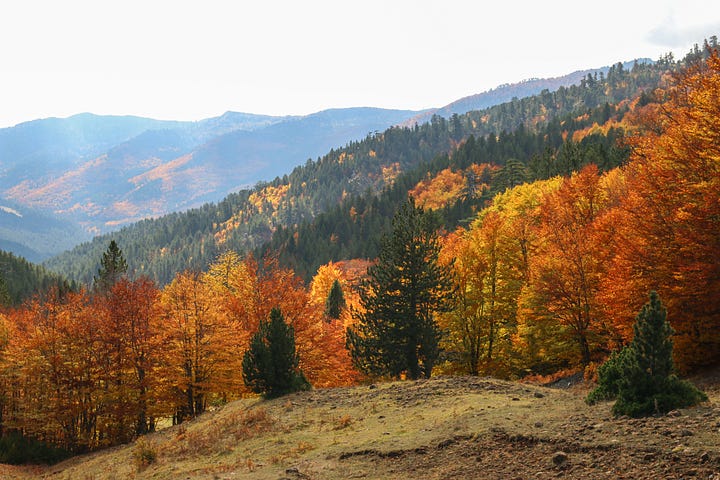
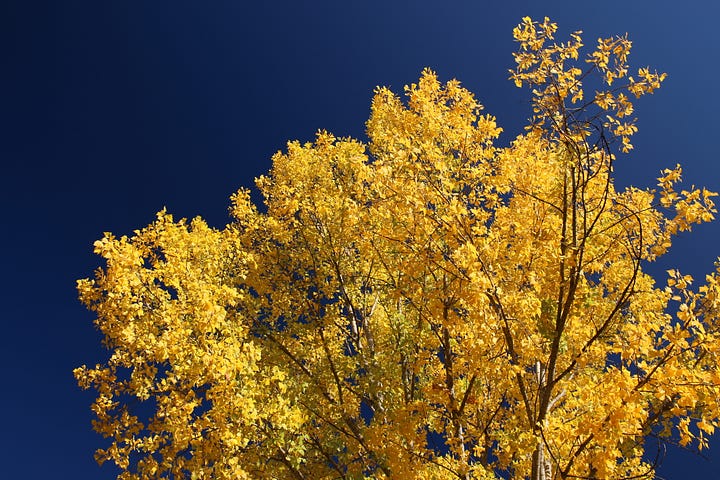
Chlorophyll – that magic green juice responsible for photosynthesis, a plant’s mechanism for extracting energy from sunlight, thereby enabling all life on Earth to exist – often popped up in school biology classes, but I don’t remember any lessons about carotenoids, or about why plants could be any colour other than green. Turns out that carotenoids play a role in all sorts of functions, but one of the main roles of xanthophylls in particular is to protect plants against damage from the sun.
When the season for photosynthesis is over and deciduous plantlife allows its chloroplasts to wither and die2 – a process known as autumnal senescence – it’s the colours of the surviving carotenoids that come through. Some trees also produce spicy-looking red flavonoids, for reasons which apparently are not well understood.3
‘The sunbeams of centuries’
While the lowlands now resonate with deciduous fire, the highlands and islands have oxidised into a more mothy, ochreous weave. A couple of months ago, the slopes of the Outer Hebrides were cast into shades of gentle purple by millions of tiny heather bells; now the flowers are gone and, in between grim doses of battering rain, they smoulder in warmer tones. For me, today, these feel like the colours of home.
Enough amateur sciencing for one post. For balance, I’ll close with a magical snippet of prose by John Muir. It’s not just the shovel-loads of alliteration that make it ping off the page for me, but the idea of burning branches reciprocating the same fire that they ‘sifted’ from ‘old sunlight’… Pure magic.
'Our big fire, heaped high with rosiny logs and branches, is blazing like a sunrise, gladly giving back the light slowly sifted from the sunbeams of centuries of summers; and in the glow of that old sunlight how impressively surrounding objects are brought forward in relief against the outer darkness!'
John Muir (‘My First Summer in the Sierra’, 1911)
Why we never experience true silence
Nothing penetrates the stone-walled solidity of this mountainside AirBnB. It's a cuboid cavern of calm on the slopes of Taygetos, where I sleep on the ground floor in a comforting nook. The room has a low wooden ceiling and only two windows, and my wide wooden bed is pushed against the darkest wall opposite. I have closed the hardwood shutters and the f…
Do chloroplasts die? Although they don’t meet the standard definition of a life form (they’re organelles within cells) they do have their own DNA, separate from that of the cell nucleus.
I thought I was hot on the heels of the answer when I learned that there are two types of chlorophyll: A and B. Both reflect green light, and whereas the more common type A is specialised towards absorbing particular wavelengths (either side of green), type B absorbs a greater range of (commonly available) wavelengths. This makes it better suited to shaded areas of scattered light. Certain plants have therefore adapted to living in the shade by using a greater proportion of chlorophyll B. But it seems that none of this has much to do with the yellow and orange colours of autumn. Behold, science:

https://academic.oup.com/aobpla/article/10/3/ply028/4992655


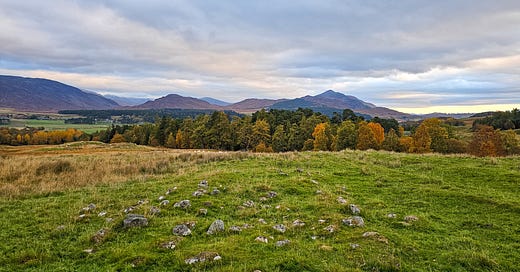


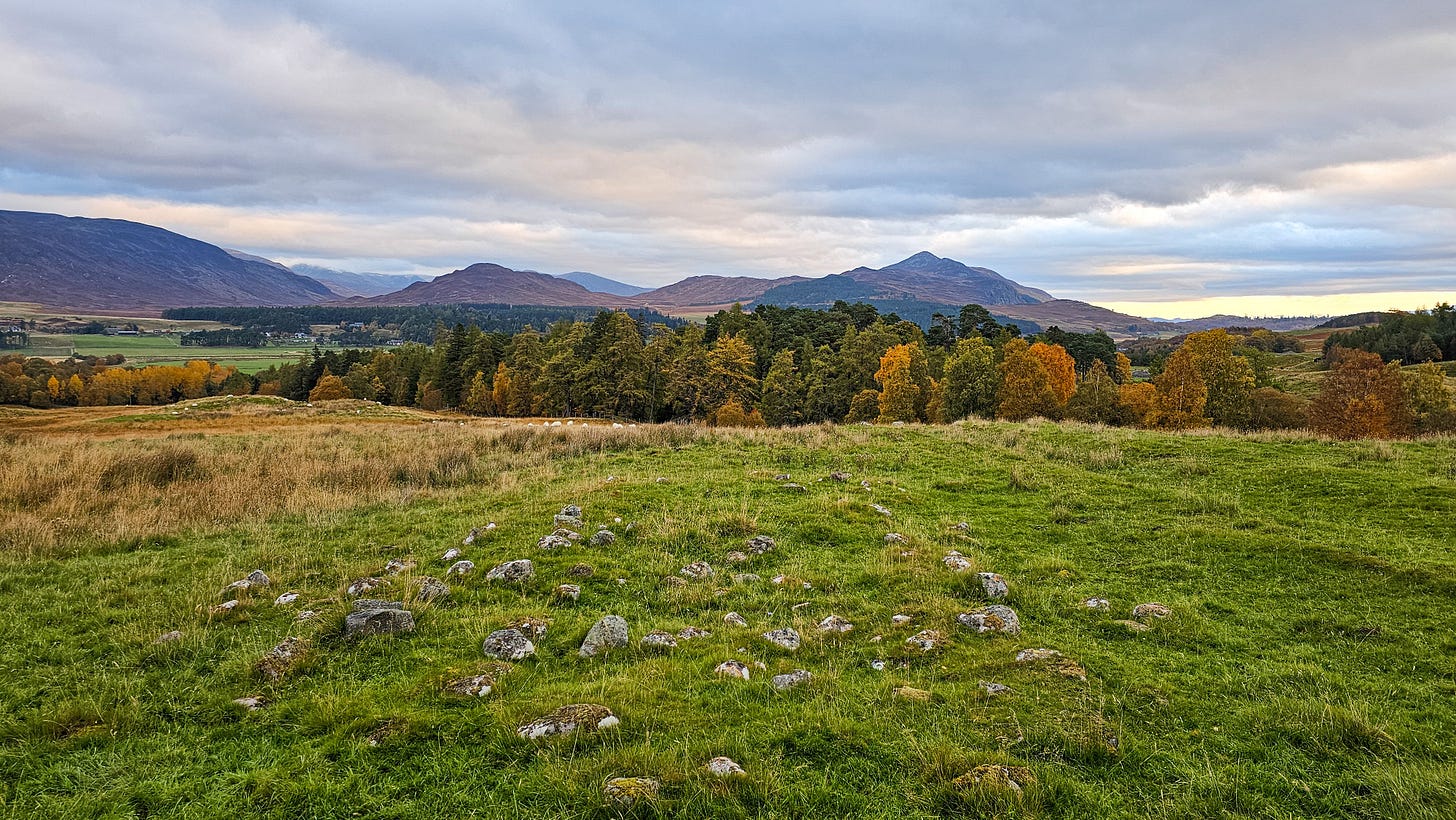

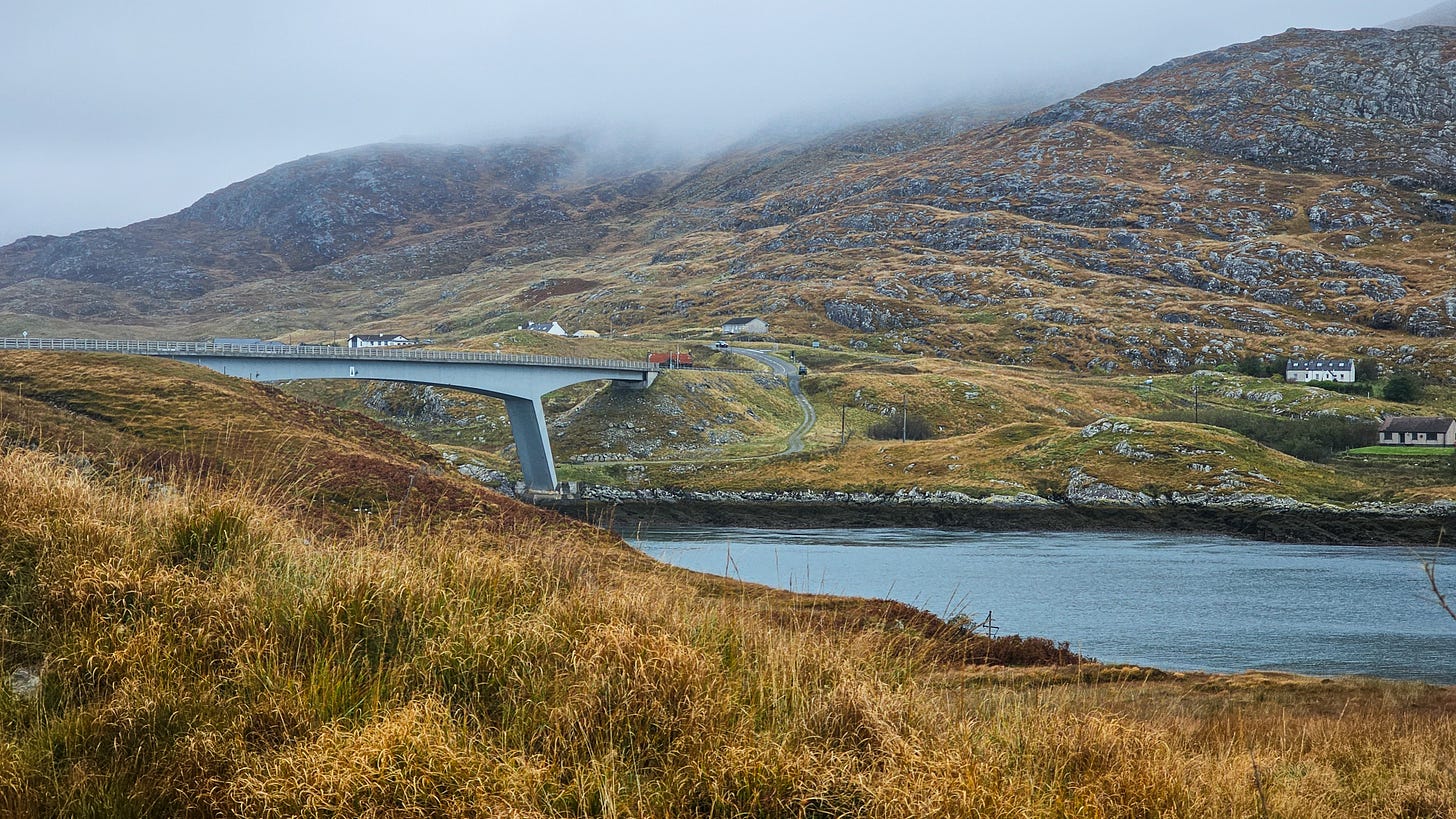


Beautiful. Thanks for sharing, Theo. I’ve always thought of the Outer Hebrides as windswept and barren, but your pics and poetic descriptions highlight that they’re full of life too. There’s something awe-inspiring and epic about the landscapes up there. 🌿✨
Liking the name change to Lost Diaries and I think it's bound to be a positive pivot for the publication. Alliterations aside, this was a meditation on the season that has the potential to linger in the mind. The John Muir snippet at the end kind of added to the magic and brought things together nicely.